When we spoke last on Tuesday I was just back from an afternoon of rail-bicycling, a trip facilitated by the lend of our friend Morgan’s Saab.
On Wednesday morning Oliver and Catherine were due in Odense, two hours and a bit to the west of Malmö, to visit our friend Signe and her dog Sally (Signe and Sally spent the last 5 years in Charlottetown and just returned home to Denmark this summer). With Morgan’s car still in hand I dropped them off at Malmö Central Station around 9:00 a.m. and then headed to the nearest gas station with a car wash to polish and gas up the car before returning it to Morgan’s garage.
I almost made it: as I was turning left into the Statoil gas station the car completely lost power: no engine, no power steering, no power brakes. Fortunately I had enough momentum to glide across the street and down into the Statoil parking lot, narrowly missing an opportunity to cut off the neighbouring McDonalds’ drive-thru entrance.
The car was dead: it would turn over, but no start. And there was a big red exclamation point inside a triangle on the dash.

Before calling Morgan I did some Googling for help and found a lot of it – apparently Saabs don’t start quite regularly – but none of it helpful enough to get me back on the road.
So I called Morgan, and we launched into an hour long SMS-and-phone-call mediated joint research mission that took me through pouring water on the transmission (my idea; suggested on the web as a possible way of unsticking the “crank position sensor”), filling up the windshield-washer fluid (to clear this item from the warnings log on the dash and possibly uncovering the more dire warnings hidden underneath), and just waiting for a while to see if cooling down helped.
None of this worked.
So Morgan, fortunately close by, walked on over for some on-site help.
And then the garbage truck arrived. It seems that I was parked in front of a no-parking sign on the front of the fence around the gas station’s dumpster. And the garbage truck needed to empty the dumpster. I flung my hands up in despair, and agreed to try to push the car out of the way.
And then Morgan arrived. Which was good, because there was no way I was going to push and steer that car by myself.
So I steered, Morgan pushed, and we got the car out of the way.
After a little bit more trial and error Morgan resolved that the solution was out of our reach, and put in an email to his mechanic. And we retired back to Morgan’s place for some coffee and conversation.
If you’re going to blow up somebody’s car, Morgan turns out to be a pretty good candidate: we had a nice afternoon of coffee, more coffee and then lunch, and appeared to both be able to look upon the incident as a Great Adventure.
The car is, last I heard, in the arms of BilPartner, with a tentative diagnosis of fuel pump-failure.
Romeleåsens Dressincykling has been on my “must do next time I’m in Malmö” list for quite a while, but circumstances never aligned to get me there. Today, thanks to the generous lend of a car from my friend Morgan, sunny weather, and Catherine (of knees-incompatible-with-cycling) occupied at crafts demonstrations for the day, circumstances did align, and Oliver and I set off for rural Björnstorp, about 30 minutes out of the city. Here’s what we were headed for:
Dressincykling is “trolley cycling,” and in this case at least it means riding a cycle-powered railway inspection contraption over 7 km of an abandoned rail line from Björnstorp to Veberöd. There’s room for a “driver” – the one who cycles – as well as a passenger (who sits on a wooden bench) and also for a bag or other supplies you might want to take.

I phoned ahead for a reservation and was told to show up a 1:00 p.m., and, sure enough, when we arrived the owner was at home waiting for us. A 5 minute introduction – how to cycle, how to turn around (pick up the 60 kg cycle and rotate it), how to use the brake (it’s a foot pedal, not a hand brake or “cycle backwards” brake) – a 200 SEK (about $30) payment and we were on our way, cycling through the fields and woods of rural Skåne.
Oliver – he averse to all carnival rides and most anything where he’s in motion – was freaked out for about the first 5 minutes, but when he realized that I could slow down and stop at any point, that the contraption couldn’t fall over, and that it was speed-limited by my legs, he calmed down, started to crow like a train whistle and settled into the ride. I even convinced him to try cycling for a moment or two (it didn’t take).

The rails were, as rails are, flat, and the cycle offered much less friction than a regular bicycle, so even though we traveled 14 km over the afternoon, it didn’t feel like we’d cycled that far (you cycle out 7 km then turn around and cycle back 7 km).
About 20 minutes into the trip there’s a pleasant picnic area (100 m up the road there’s also a café, but it was closed, something we learned with some quick Google Translating of “stängt”). We stopped for a rest, spent some time with a very nice black cat, and used the toilet that’s off in the woods and surrounded by a shelter made from sticks.



After this break we were off again, and about 30 minutes later we came to the end of the tracks. Having come completely unprepared and so without food or water, we were happy to find that Veberöd is a well-resourced little town with ATM, grocery store, pizza shop and public library (does one need anything else for survival?). We bought some chicken curry sandwiches at the gas station along with some bottled water and some chocolate, ate in the town square, and then headed back to the cycles.
Waiting at the rail-end we found a Swedish family and their two cycles, and we swapped cycles to make logistics easier and I got some help turning ours around. The ride back was slightly inclined, so I got a little more winded than I thought I would from the easy downhill there. But it was nothing too fatiguing, and with a brief stop to renew ties with the cat we were back at home base about 45 minutes later.
Altogether the trip took us about 3 hours from start to finish. We rode through forests and fields, crossed about half a dozen roads (which are well-signed; one even has a STOP sign you swing out before crossing), and never ran into any trouble. The cycles are well-maintained, the little introduction just enough information, and the people we met along the way were friendly and helpful.
If you ever make it out yourself, I recommend taking a picnic lunch: there’s room enough on the deck to carry it all, a very nice picnic area to eat it in, and you’ll be glad for the break (say hello to the black cat for us). If you, like us, go unprepared, from the end of the line just cross the road, follow the path to the sidewalk, the sidewalk to the main road, turn right and about 500 m along you’ll find food, water and cash. All in, a great day-trip from Malmö or Copenhagen.
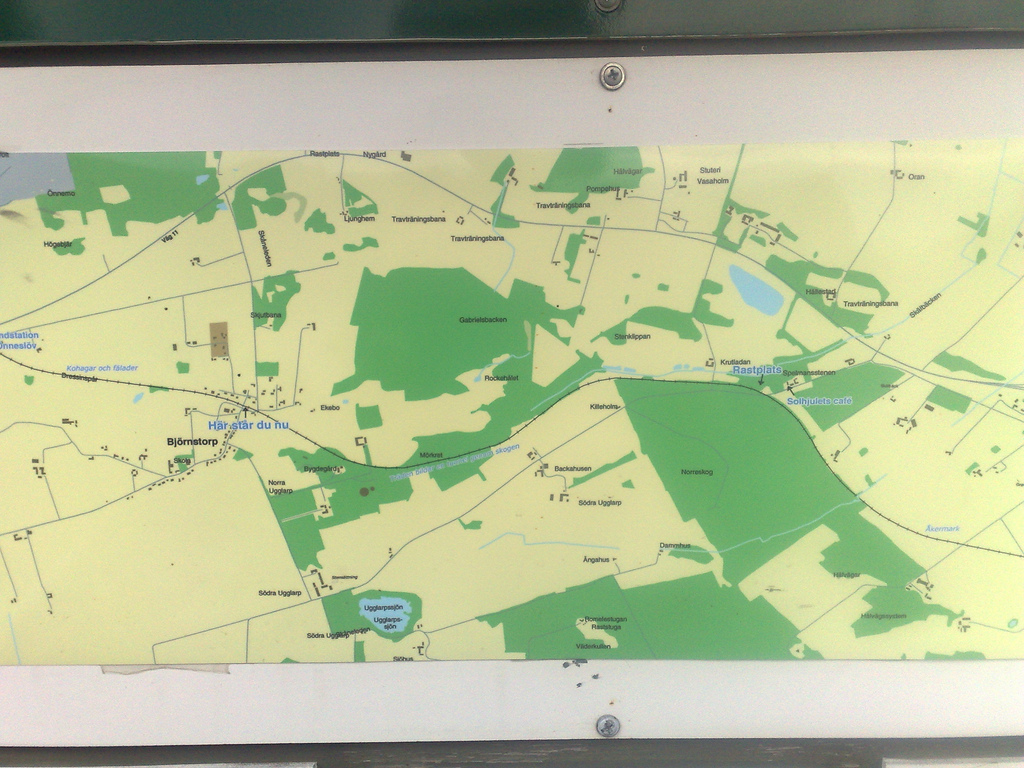
On the train yesterday Oliver and I counted 18 science museums that we’ve visited over the years, from Boston to Košice, Genoa to Lisbon. Given that I spent an entire semester of high school embedded in the Ontario Science Centre, it’s a sort of institution near and dear to my heart, and although there’s overlap from city to city – the infra-red camera, the spinning chair you sit in while holding a spinning bicycle wheel and the like – each museum has its niche and we’ve never been bored. You might even say we’re science centre tourists.
Yesterday was no different: we caught the train from Malmö, where we’re spending a week visiting friends, across the water to Copenhagen for the day (this sounds exotic, but it’s a quick 30 minute train ride that feels little different than going from Oakville to Toronto on the GO Train). Our destination was the Experimentarium in the northern suburb of Hellerup.
We had a fantastic time, and spent almost 5 hours there. We started our visit with the special Body Worlds exhibition that’s been making its way around the world. To be honest, the prospect creeped me out a little: Body Worlds centres around a collection of “plastinated” bodies – real human bodies whose formerly-living owners had donated them to be preserved and put on show. And while it is all a little creepy, it was also fantastically interesting to see things like the nervous and circulatory systems, muscles and brain exposed. We both learned a lot about how the body fits together and left feeling, I think, a little more animal.
The rest of our time was taken up in the vast second floor exhibit hall, exploring everything from animation to sedimentary processes (a passion Oliver, grandson of a sedimentologist) to a very well constructed exhibit on the senses.
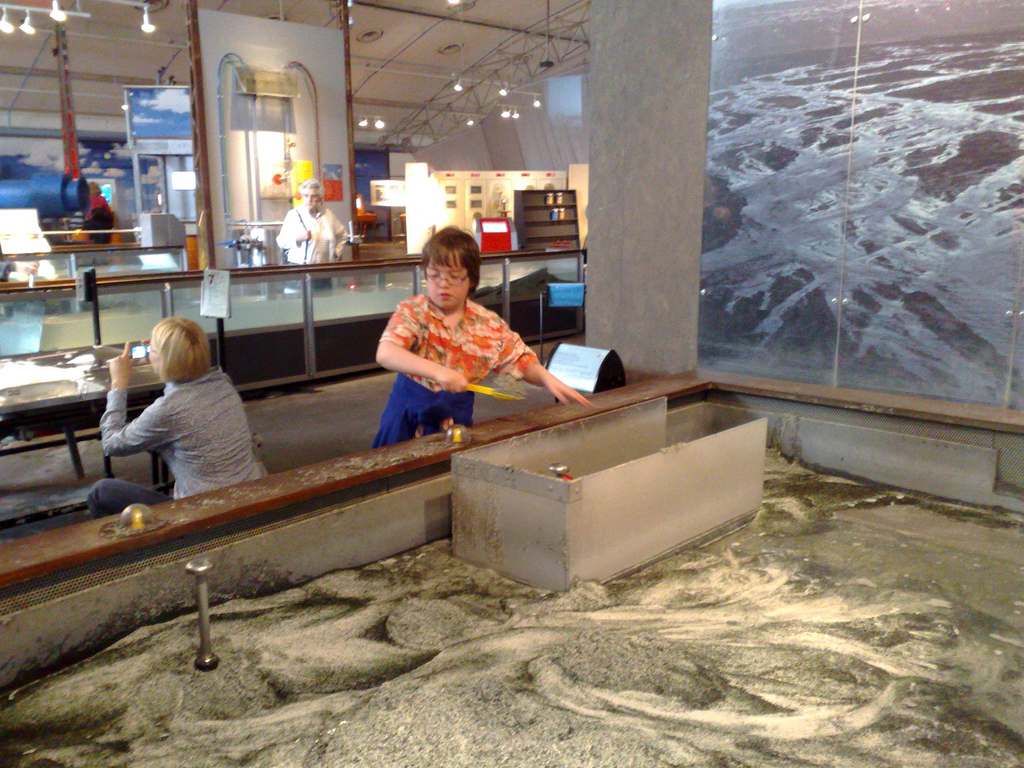
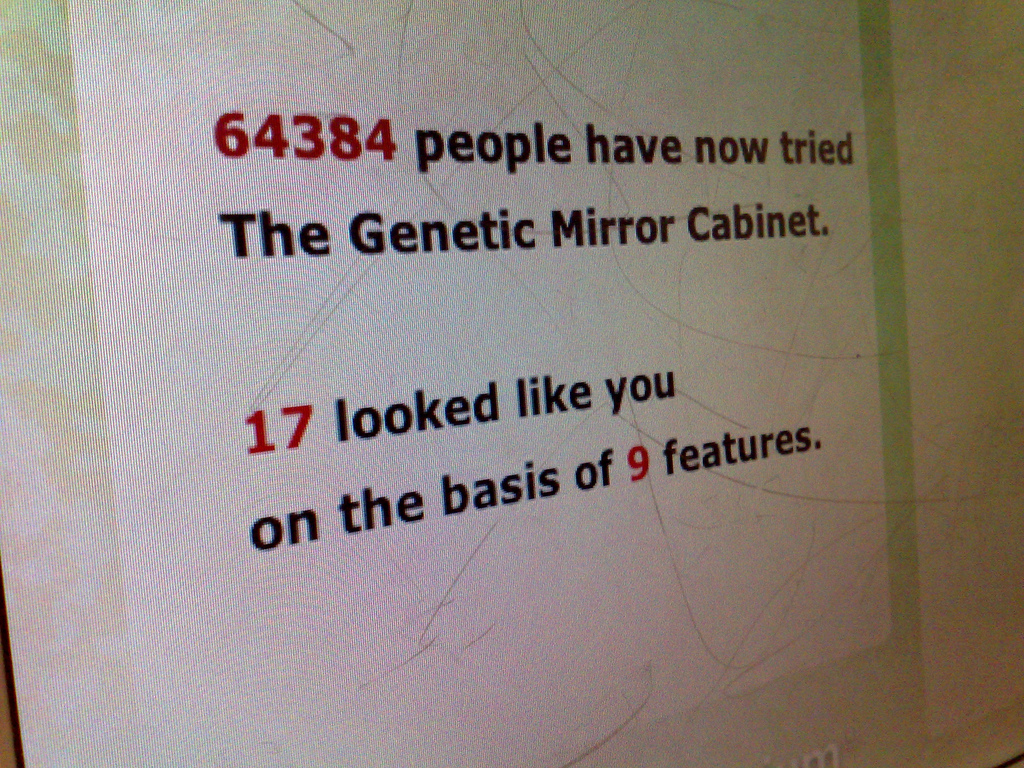
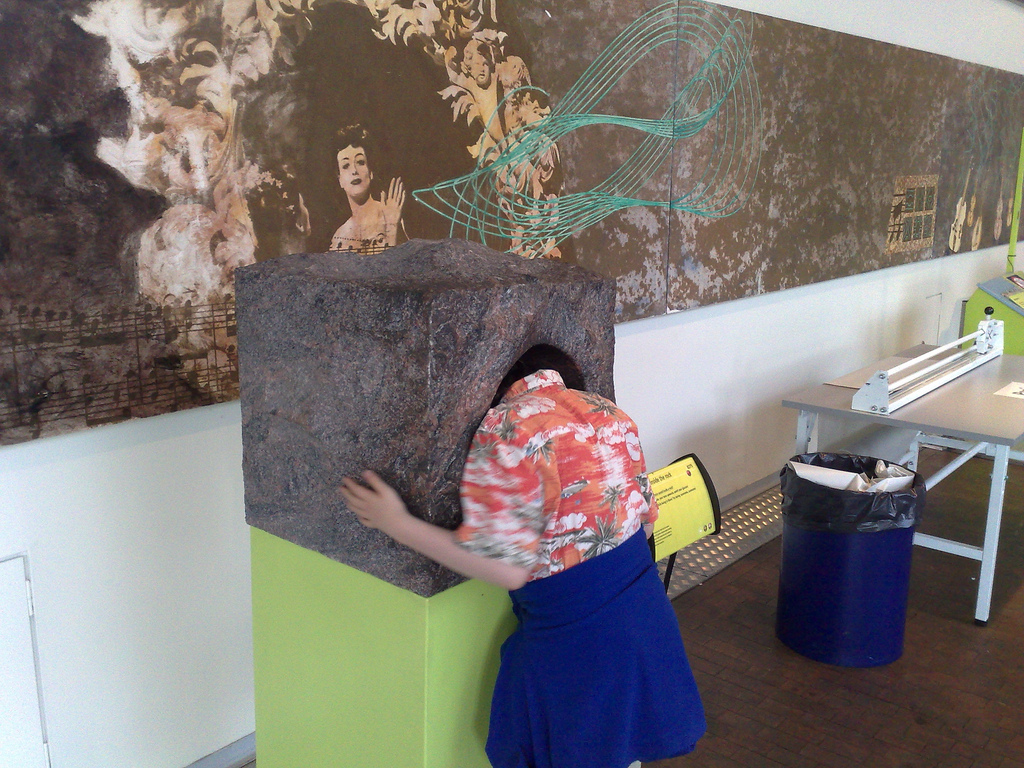
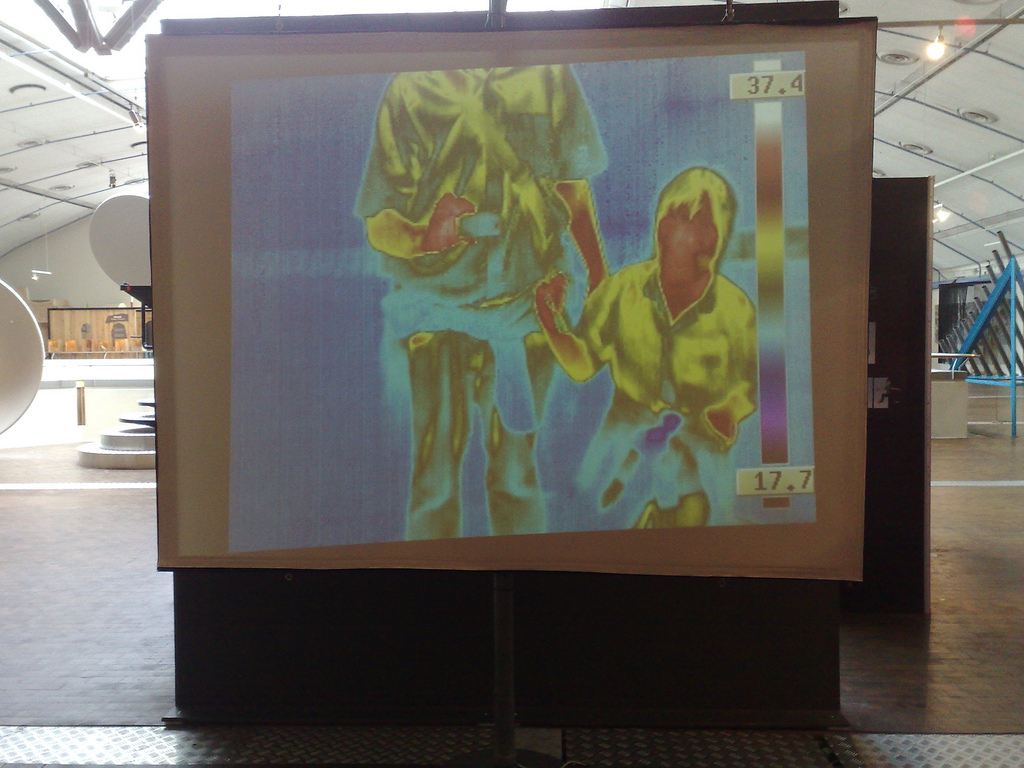
If you too are science centre tourists, or even if you’re not, I highly recommend this Danish take on the form: it’s a great way to spend a day with kids in Copenhagen.
Everything about betahaus, the coworking space where I’ve worked for the past five weeks, shifted for me a few weeks ago when I saw Christoph Fahle arrive for his day at the office.
Christoph is one of the co-founders of betahaus and on the day in question I was sitting in the ground floor café here having my morning coffee when Christoph walked in the door, stopped, took off his jacket Mr. Rogers Neighbourhood-style, and hung it on the coat rack by the door.
At this moment my conception of betahaus changed from “hotel for working” to “office away from the office.”
Which is to say, to that point I’d been conceiving of betahaus as a place that I was renting a tiny desk-sized slice of; when I watched Christoph treat betahaus’s public spaces as one would, well, one’s office, that all changed, and I began to see betahaus not through microscope of my rented desk, but as a shared social space, less “hotel” and more “temporary home.” You’d never hang your jacket by the front door of the Hilton; but, when you’re staying over for a few days at your friend’s place in Maui, you would.
But this is a love letter, not an essay, so let me tell you what I love about betahaus:
- All the formal stuff just works: the signing up, the paying, the getting-of-keys, the learning about what desks you can sit on, is all efficiently and expertly handled. The learning curve is gentle and 15 minutes long, and everyone helpful and kind and welcoming.
- The formal-informal mix is just right, and is based largely on the honour system. You buy your time – a day, a week, a month – and then you just come to work. There are no key-cards, sign-in sheets, or other measures to make sure you haven’t overstayed.
- The working desks are simple slab-on-sawhorse, but configured at the right height for typing and have enough power points, good natural and artificial light, and not-perfect but just-adjustable-enough desk chairs.
- The vibe, which is hard to quantify or describe, is just right. Take a couple of dozen unrelated people and put them at desks in a big room and I imagine that, were conditions different, all hell could break loose as everyone slowly annoyed each other to death with their phone-ringing, guffawing, loud-typing, noise-leaking-from-headphones habits. But for some reason this doesn’t happen: the work spaces don’t have the hushed nature of a library reading room, but neither to they have the unrestricted cacophony of a café. I really doubted whether I was going to be able to work effectively in a room with other people, but it turned out to not only not be a problem, but it turns out I actually prefer it.
- The level of intraoffice trust is good: people go down to lunch and leave their laptops and desks as they would in a regular office. So you can relax. And not have to bundle up your workstation every time you go for a pee.
- The café. This is the killer feature of betahaus: on the ground floor there is a large, comfortable café, open from 8:00 a.m. to 7:00 p.m., serving good coffee, good croissants, and excellent freshly-prepared lunches. Longtime readers of my blog will know that I often get preoccupied and forget to eat lunch, to my productivity detriment; that never, ever happens here at betahaus, as tasty relief is two floors down. The café staff are universally excellent at what they do.
- The wifi works. All the time. Wifi generally never works like this, so someone’s doing something right.
- There’s a super-duper slices-and-dices printing, scanning, emailing Xerox super-device on the network. 2.5 cents a copy. I’ve used it for mailing labels, trains tickets, and to scan and email myself things. And the hardware guy who gets you set up is super-nice and knows his stuff.
- Prinzessinnengarten, a community garden cum café cum event space is right next door. When the betahaus café doesn’t have enough quiet contemplation reserve, a trip over to the garden does it.
- Modulor is 2 minutes away. I’ve sung the praises of this “creative supply” store before, but I can never sing too much: from pretend grass for architects models to any one of two dozen varieties of rulers you can buy anything there. And it’s close enough to be tantamount to betahaus’s in-house supply shop.
- The location is just right: the U8 subway line is right next door, which connects betahaus to everything else in Berlin; within 10 minutes walks are more restaurants, coffee shops, and parks than you could ever hope to experience in a lifetime. For me the location was even better, as our apartment on Graefestrasse was an easy 15 minute walk along the canal away.
I happened to run into Christoph on my first day here, and then again in the elevator yesterday; both times we had a nice chat about how people like me – “digital nomads from away” – are part of why betahaus was created. And it’s working.
If you find yourself in Berlin needing a place to call office for a while, I can unreservedly recommend betahaus; it’s been an important part of why this summer in Berlin has been so pleasant.
(You can hear Christoph and others talk about betahaus and about co-working in general in People in Beta, an excellent video from KS12).
Many of sidewalks of Berlin, like many cities in Europe, are constructed of stones rather than poured concrete. While in North America we use “cobblestone streets” as a way of achieve a sort of faux oldness, here in Berlin it seems to be an entirely practical thing, a way of allowing the sidewalk to adapt over time to the various construction projects it will be subject to (as contrasted to the North American approach that appears to be based on the lie that once a sidewalk is poured it will never need be modified).
For the entire duration of our 40 day stay in Berlin the sidewalks on our stretch of Graefeststrasse have been in various states of disarray as new gas lines have been installed. For a street with as much “street life” as Graefeststrasse – restaurants, coffee shops and ice creams places with more outside seating than inside seating and an almost 24-hours-a-day “hang out on the street” scene – this has been disruptive, but life has routed around.
This week the work is almost over, and the process of reassembling the parts of the sidewalk that were affected has begun; on my walk to the office this morning I took three photos of this process in various stages:
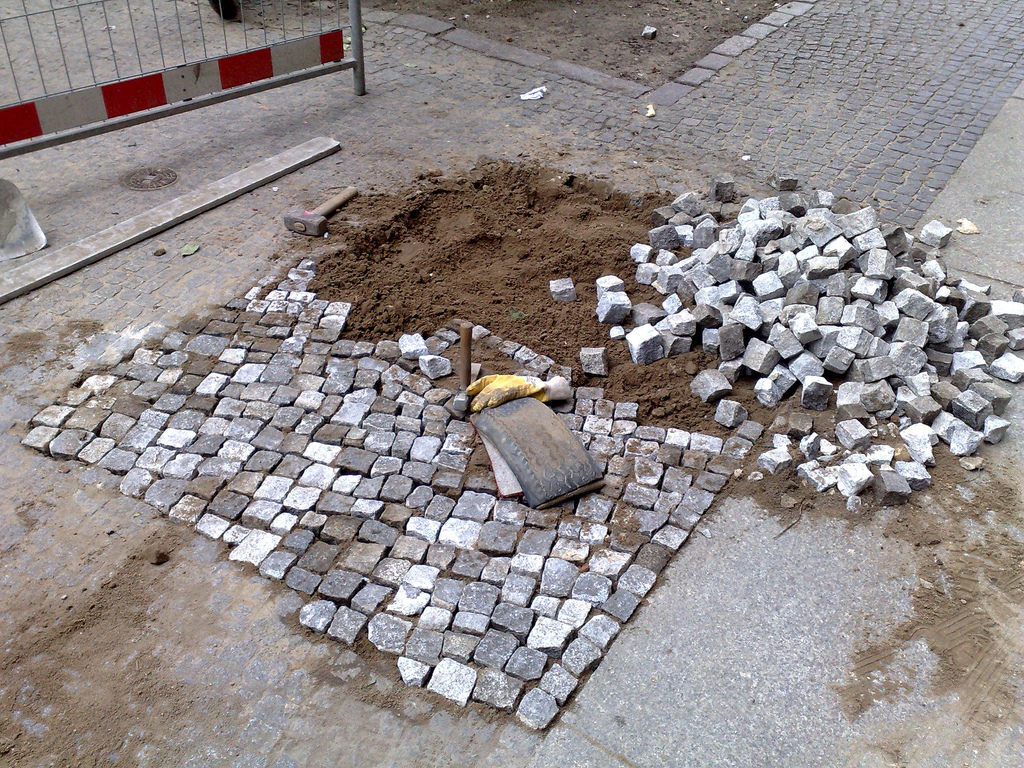
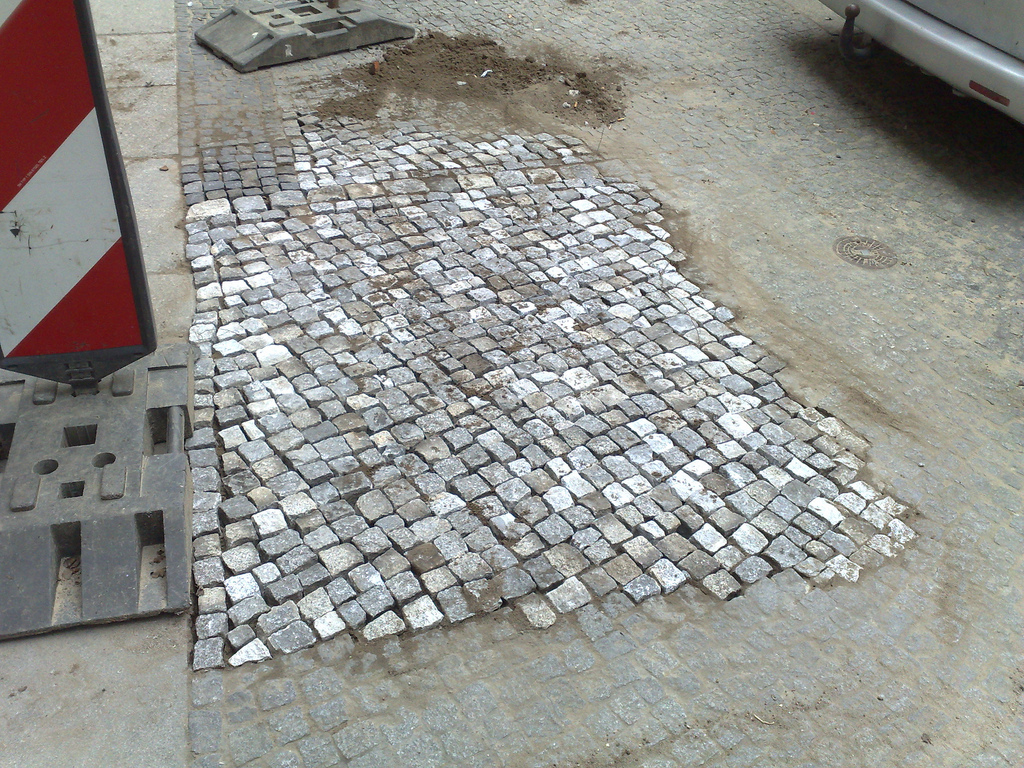
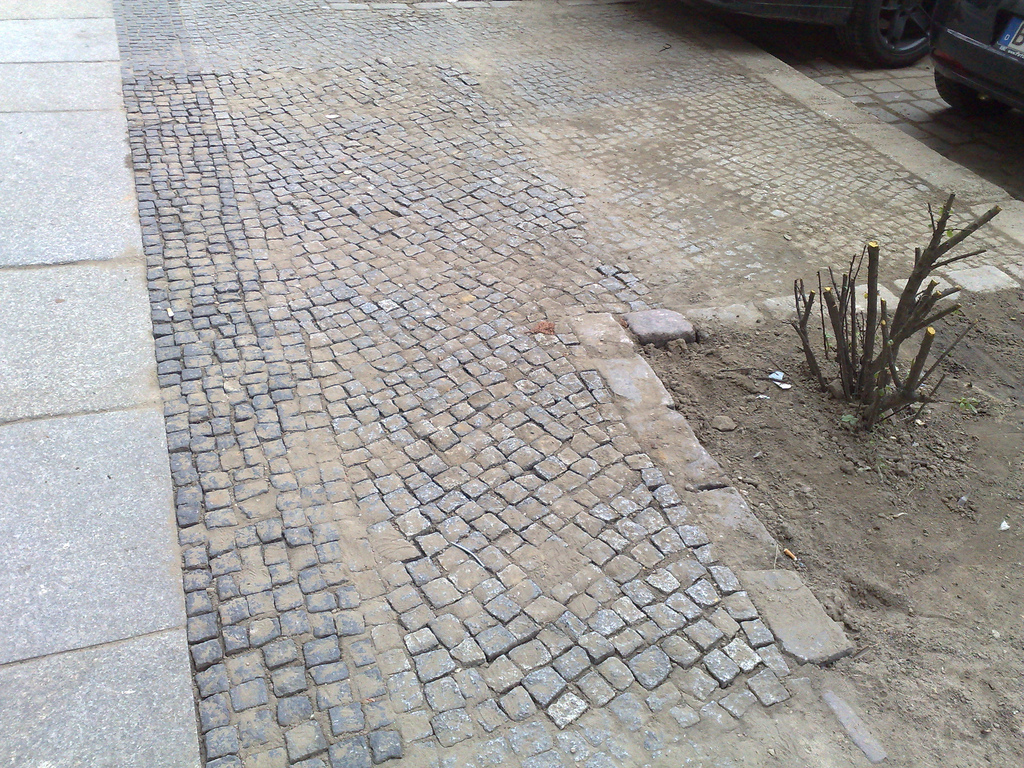
Having spent the summer, in part, solving the jigsaw puzzle that is letterpress typesetting, I appreciate the jigsaw puzzle of sidewalk reassembly even more. The finished product, once its been filled in with sand and walked on for a day or two, becomes a natural part of the sidewalk landscape again. It’s like nothing ever happened.
Yesterday was my last of five Tuesdays this summer I’ve spent printing in Druckwerkstatt, the magical printing workshop in Kreuzberg 15 minutes walk from our apartment in Berlin. While it’s sometimes been a logistical challenge to carve out time from work and family to spend 8 hours in the letterpress shop, it was worth the effort: I was able to learn to print using an entirely different press (an old Grafix proof press), with an entirely different collection of type, mostly wood, from anything I’d experienced before, and with an excellent colour palette of inks.
Druckwerkstatt is an amazing facility and its collection of type is the largest I’ve ever seen. Alas, as the bent of the facility is art rather than trade, most of the metal type goes unused, sitting lonely in its drawers. On my first week there the studio manager, Frank, advised against trying to print with smaller sizes of metal type on the proof press because it would be difficult to manage them on the press; and, true enough, without composing sticks or any of the usual “type management” appliances a letterpress shop would have, it was. And so I focused my efforts on wood type.
But yesterday, with Frank safely on vacation and therefor unable to protest, and the metal type crying out to me, I decided that I had to awaken it at least once. And so I set up a “thank you” card for my 40 subscribers, intended both as an actual thank you for their support and encouragement, and also as a card they could then turn around and use as an actual card for someone else.
For the front of the card, the “Thank You,” I choose Gill Sans; it’s a classic face, and although it’s one I have in smaller sizes at home, I welcomed the change to use the 48 point font I found:

For the “credit” on the back of the card I went with Volta (“fett,” which is “bold”) and Thannhaeuser.
Volta is a German-designed typeface from1957 designed by Konrad F. Bauer; it’s pleasantly substantial, and I’m particularly fond of its lowercase “i”. As I could only find Volta in lower case, I set the “printed in berlin” in all lowercase.
Thannhaeuser is a self-titled face from the East German designer Herbert Thannhaeuser, director of the state-owned VEB Typoart foundry. It’s a peculiar face that seems both old and modern to my eye; it’s got a lovely lowercase “e” and “x”, a fantastic uppercase “G” and numerals that aren’t of the style I generally like, but that seem to work here.

Here’s the final result, off in the mail today, with thanks, to destinations around the world:
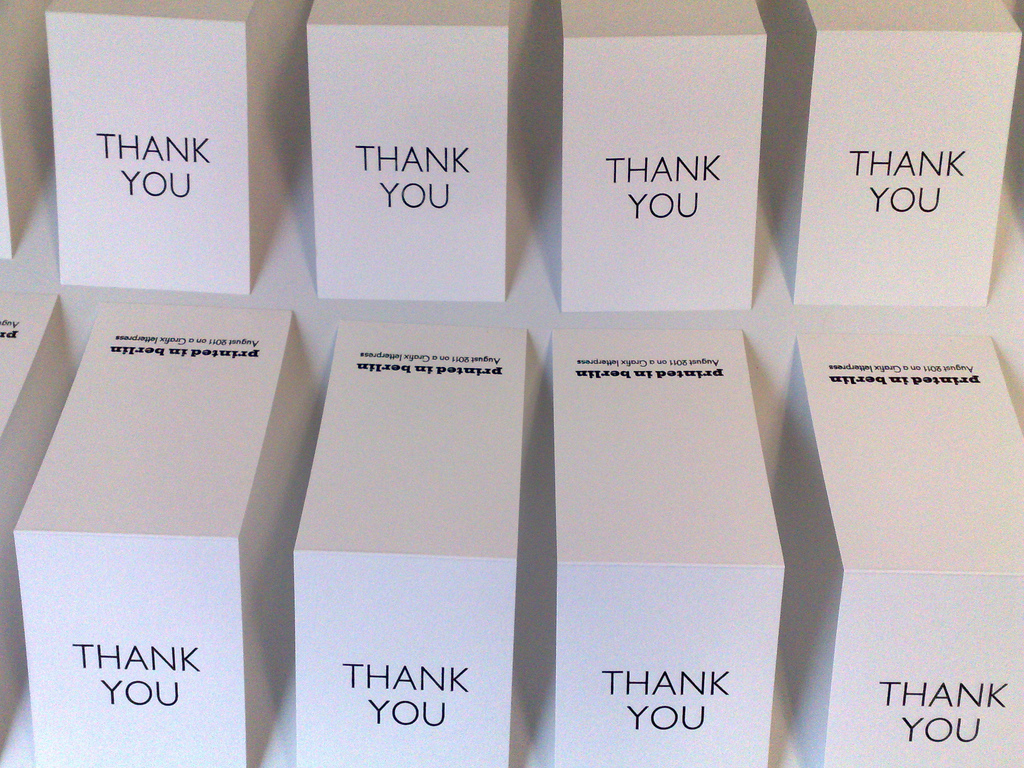

One of the things I love about Berlin is its cinema scene. While there are multiplexes galore, there are also still many small independent cinemas and smaller chains keeping smaller cinemas in business. And then there are the open-air cinemas – Freiluftkino – which, truth be told, are one of my reasons for wanting to be here in the summer.
In our neighbourhood in Kreuzberg there are half a dozen cinemas within easy walking distance; of these, Babylon Kreuzberg and Moviemento play some films in English – “OMU” or “OV” in the listings, though you’ve gotta be careful because a French film “in the original version” probably means French with German subtitles. There’s also the Freiluftkino Kreuzberg (site of my first open air cinema experience, back in 2007; as it happens, located immediately behind the letterpress workshop I’ve been printing at, so very handy) and the Freiluftkino Hasenheide, a slightly longer walk, but worth it for its location and setup inside a massive city park.
As I’ve been trying to get a feel for what big city life is like, I’ve felt an obligation to attend as many movies as possible during our weeks here (based on the possibly-made-up assumption that this is what big city people do). Some of these I’ve seen with Oliver, some with Oliver and Catherine, and many by myself after they’ve gone to bed.
Our only misstep, if you can call it that, was when we went slightly further afield to Freiluftkino Insel to see Scott Pilgrim vs. The World: I’d neglected to notice that it was the dubbed-into-German version, but as we’d already made the trip we decided to stay, and if you leave out that Catherine had the uneasy experience of having a rat run between her legs (the cinema is in an abandoned rail yard that’s been reconceived as an “adult playground”), it was actually rather fun (it turns out that you don’t really need the dialogue for Scott Pilgrim vs. The World to understand it).
For the record, here are the films I’ve seen:
- Win Win
- The Wizard of Oz
- Beginners
- Barney’s Version
- Scott Pilgrim vs. The World
- Mary & Max
- Four Lions
- I’m Still Here
Additionally, Catherine and Oliver have seen The Zookeeper and Monte Carlo at the big Cinestar multiplex at Potsdamer Platz, which seems to play English-language movies almost exclusively, is very posh, but, alas, requires venturing into the antiseptic environs of Potsdamer Platz, Berlin’s “new downtown” full of glass and steel skyscrapers.
I’ve seen the trailers for more than a few German films that, I imagine, will never make it to Canada; most of them appear to be some variation on the theme “modern-day hippie arrives in rural German town and brings the villagers to life with his unusual outlook on life.” Indeed I just looked up the plot description for one of these – Sommer in Orange – and it’s described as a “culture clash comedy about the clash of wild life in a Bavarian village and commune Bhagwan community,” so I think I got it right.
I may be many things – someone called me a “pluralist” a couple of weeks ago – but a party person I am not. A combination of social awkwardness, claustrophobia, lack of experience and plain old ignorance of what one is supposed to do at a party mean that the prospect of writhing after-dark Berlin was about as inviting to me as a field trip to prison.
But this trip, for me, is about filling more pages into the atlas of possibilities, and so when Eric kindly put me on the guest list for last night’s SoundCloud–EyeEm Summer Party it felt wrong not to attend on several levels. Slightly more levels, in the end, than it felt right not to attend.
So I plucked up my courage and headed out into the heady atmosphere of Berlin nightlife and found my way to Picknick where, sure enough, I was on the guest list. What I found inside was, indeed, several thousand miles outside of the boundaries of my comfort zone, but I persevered and hung in for 90 minutes of beer drinking, people watching, music listening and what I might call sociological research (you might call it “hanging out on the fringes of the crowd trying hard not to look like a dork”). Here’s what it all felt and sounded like:
Around about dusk on Friday at Chaos Communication Camp, Oliver and I were starting to flag. It had been raining, we’d just finished dinner, and we were feeling a little at loose ends. Suddenly, as if from nowhere, a gaggle of quadcopter pilots emerged, set their crafts of the ground around the festooned airplane we were looking around, and started to fly. It was, in an entirely geeky way, a magical moment, and it gave us the second wind we needed to stay at camp into its transformation as a ethereal playground of sound and light.

 I am
I am